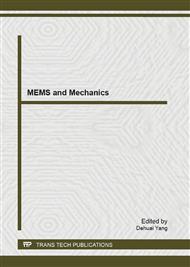[1]
Moglia M, Davis P, Burn S. Strong exploration of a cast iron cylindrical vessel failure model. Reliab Eng Syst Safte. 2008;93:885-96.
DOI: 10.1016/j.ress.2007.03.033
Google Scholar
[2]
Kirmeyer GJ, Richards W, Smith CD. An assessment of water distribution systems and associated reearch needs: Foundation and American Water Works Association; 1994.
Google Scholar
[3]
Mohebbi H, Li CQ. Application of fracture mechanics in reliability analysis of corrosion affected cast iron water mains. 12th International conference on durability of building materials and components. Porto2011. [4] Rajani B, Makar J. A methodology to estimate remaining service life of grey cast iron water mains. Canadian Journal of Civil Engineering. 2000;27:1259-72.
DOI: 10.1139/l00-073
Google Scholar
[5]
Diamantoudis AT, Labeas GN. Stress intensity factors of semi-elliptical surface cracks in pressure vessels by global-local finite element methodology. Engineering Fracture Mechanics. 2005;72:1299-312.
DOI: 10.1016/j.engfracmech.2004.10.004
Google Scholar
[6]
Raju I, Newman J. Stress-intensity factors for internal and external surface cracks in pipes. ASME Journal of Pressure Vessels Technology. 1982;104:293-8.
DOI: 10.1115/1.3264220
Google Scholar
[7]
Sethuraman R, Reddy G, Ilango IT. Finite element based evaluation of stress intensity factors for interactive semi-elliptic surface cracks. International Journal of Pressure Vessels and Piping. 2003;80:843-59.
DOI: 10.1016/j.ijpvp.2003.10.003
Google Scholar
[8]
Bueckner HF. A novel principle for the computation of stress intensity factors. ZAMM. 1970;50:529-45.
Google Scholar
[9]
Bueckner HF. Weight functions for the notched bar. ZAMM. 1971;51:97-109.
Google Scholar
[10]
Glinka G, Shen G. Universal features of weight functions for cracks in mode I. Engineering Fracture Mechanics. 1991;40:1135-46.
DOI: 10.1016/0013-7944(91)90177-3
Google Scholar
[11]
Hertzberg RW. Deformation and fracture mechanics of engineering materials: John Wiley and Sons; 1996. [12] Irwin GR. Analysis of stresses and strains near the end of a crack traversing a plate. Journal of Applied Mechanics ASME. 1957;24:361-634.
DOI: 10.1115/1.4011547
Google Scholar
[13]
Simulia. Abaqus Users' Manual. Providence, US: Dassault Systemes; 2010.
Google Scholar
[14]
Shiratori M, Niyoshi T, Tanikawa K. Analysis of stress intensity factors surface cracks subjected to arbitrarily distributed surface stresses. In: Murakami Y, editor. Stress intensity factors handbook. US: Pergamon; 1987. pp.698-727.
DOI: 10.1007/978-4-431-68042-0_148
Google Scholar
[15]
Fett T, Mattheck C, Munz D. On the calculation of crack opening displacement from the stress intensity factor. Engineering Fracture Mechanics. 1987;27:697-715.
DOI: 10.1016/0013-7944(87)90159-7
Google Scholar


